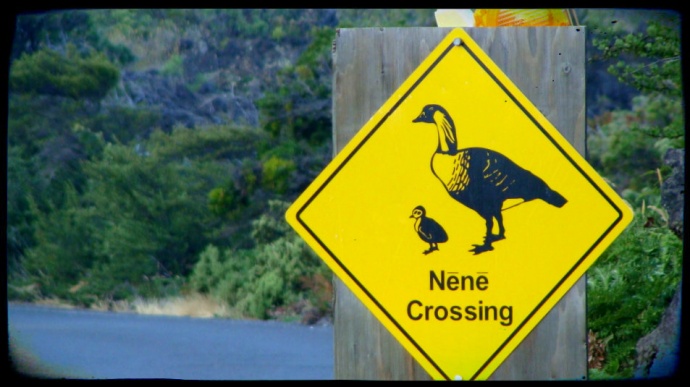Drive With Caution: Nēnē Nesting Season at Haleakalā
By Wendy Osher
Nēnē breeding and nesting season has started at Haleakalā National Park, prompting an advisory to visitors to obey posted speed limits and exercise caution while driving in the park.
“Nēnē have recently been spotted walking around the park road especially near the entrance station and Hosmer Grove during all hours of the day,” according to information released today by the NPS.
Polly Angelakis, chief of interpretation and education at Haleakalā National Park said motorists should be especially careful around shoulder areas of the road where the nēnē are known to forage in short grass, and in the middle of the road where nēnē are drawn to the pools of water that collect during wet weather.
Haleakalā is home to an estimated 200 to 300 endangered nēnē, which are known to frequent areas between the 5500 and 8000 foot elevation.
While the Hawaiian goose or nēnē is found at the park year-round, they have begun nesting, with hatching expected in December and January, and extended breeding lasting through March, said Angelakis.
“We have to remember,” said Angelakis, “nēnē have been here thousands of years, and cars have only been around for a hundred. The nēnē are very active, and motorists need to slow down,” she said.
Last year, park officials said that on average, there has been one nēnē road fatality per year during the nesting season.
As part of a new educational effort, Angelakis said the park has launched a multilingual campaign that includes signage and posters printed in six different languages throughout the park, so that visitors can understand the plight of the nēnē.
“Habitat loss and the impacts of introduced mammals were the major reasons for decline during the early part of this century,” according to information released by the NPS.
Park officials note that approximately 500 birds were released at the park through a captive propagation program, which began in 1962 and ended in the late 1970s.










